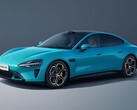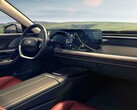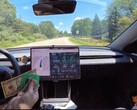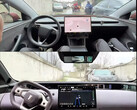From the same folks that did the quirky crash testing into a semi truck, earning accolades for the Tesla Model 3, now comes the most thorough validation of modern autonomous driving systems so far.
Their number has been exploding in China in the past few years, with the world's biggest EV maker BYD even offering its Eye of God self-driving system for free with all of its vehicles, unlike Tesla that offers FSD as a paid option.
Tesla's Full Self-Driving system, however, whether supervised or not, has now proven its value in the independent test that pitted it against Xiaomi, Toyota, Huawei, and many other Advanced Driver Assistance Systems (ADAS) of prominent brands.
Tesla faces raw driver data export restrictions in China and trains its FSD algorithms there virtually, predominantly on a simulator crafted out of publicly available video footage and test tracks, rather than real-life driving like in the US. As per Elon Musk:
And so it will train using simulator for bus lanes in China. Like bus lanes in China, by the way, were about the biggest challenges in making FSD work in China as the bus lanes are very complicated. And there's like literally like hours of the day that you're allowed to be there and not be there. And then if you accidentally go in that bus lane at the wrong time, you get an automatic ticket instantly. So, it's kind of a big deal, bus lanes in China. So we're going to put that into our simulator, train on that. The car has to know what time of day it is, read the sign. Anyway, we'll get this solved.
Tesla has apparently solved most thorny issues with China-specific driving as its cars have been put to the ultimate test ever since FSD launched there, including unmarked and unsecured mountain roads at night, or rush hour downtown traffic.
They passed with flying colors, but the latest independent test now puts them in edge case scenarios directly against some of the most popular brands and models sold in China, including vehicles with LiDAR.
To save on the suspense, Tesla earned the top spot in all challenging tests that included children or wildlife suddenly coming onto the road, other vehicles cutting, construction sites and night driving, as well as other challenging situations.
The ADAS tests included 36 vehicles, 15 hair-raising scenarios, and resulted in no less than 216 crashes, none of which involved the Model X, even the tough wild boar test, proving the value of Tesla's vision-only approach to scaling and learning when it comes to autonomous systems.

























